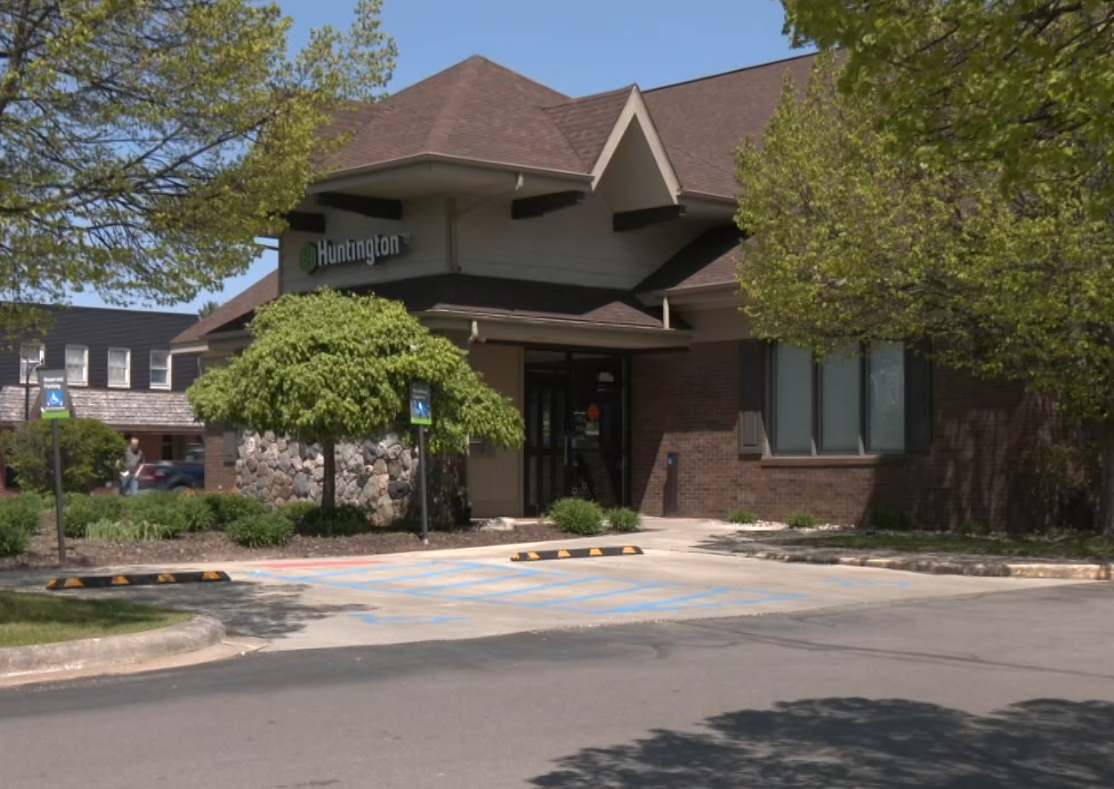
Emily Modrall is a historian and archaeologist who worked in the Mediterranean. She’s originally from Suttons Bay.
Despite the local roots, Modrall admits she didn’t know the history behind three white stone trail markers in Traverse City.
“I wanted to know more about them and about the history that they represent,” she says.
The trail markers represent the final three stops of the current Old Indian Trail that travels from Lake Mitchell in Cadillac to West Grand Traverse Bay in Traverse City.
The trail tells the story of ancient highways used by Native American tribes in the area. This allowed them to trade goods.
Modrall saw these signs as an opportunity to tell a much greater story.
“I saw an opportunity to try to help make that history more visible and acknowledged and understood through some new signs,” says Modrall. “Our Anishinaabe neighbors and the Grand Traverse Band community, these are their families that have lived here for centuries.”
Earlier this week, Traverse City City Commissioners approved plans to add new historical markers throughout the city, beyond the trail, to tell the story of the Odawa and Ojibway Anishinaabek people. The signs will be bilingual, in English and Anishinaabemowin, the language of Anishinaabe. They will represent the vast history of the tribes in the area.
“It’s really important that we, as a regional community, understand that those people have lived here for a very long time and have a set of traditions and stories and a language that predates what came in the mid-1800s with the Boardmans and the Hannahs and the logging and the shipping and the industrialization.”
Signs will accompany the current trail markers. The markers were originally placed there in the late 1980s as part of the Michigan Sesquicentennial Celebration.
Those markers were the work of Frank Ettawageshik, United Tribes of Michigan Executive Director, who resides in Harbor Springs.
Ettawageshik says the original work had been done in the forties and fifties by Milo Petoskey Crosby of Cadillac. When he retired, two other people took over until the baton was passed to Ettawageshik.
“At this point, the markers have been placed all the way to just to the east of Buckley,” says Ettawageshik. “But no markers have been placed through Grand Traverse County. And so I had done a lot of research and spent a lot of time studying on this and figuring out where I think the trail went.”
Ettawageshik’s work earned him a spot on a governor appointed agency for the sesquicentennial. He lobbied for the Old Indian Trail to be marked from Buckley to West End Beach.
The signage project will extend to Leelanau County. When the project is completed there will be six or seven signs in Traverse City and ten to twelve spread through the Northern and Eastern part of Leelanau County.
The project is thanks Rotary Charities, Native American Heritage Fund, Hagerty Corporate Giving Program and several other grants.
“The more we know, the more we can invest in taking care of the place and taking care of each other,” says Modrall.
Ettawageshik says the important part is making sure the signs tell the true history.
“It’s important that we be inclusive of all people that we tell all the story, but not at the expense of any one of the of the stories that exist there,” he says.
The Grand Traverse Band of Ottawa and Chippewa Indians will have final approval over the sign content.

© 2023 - 910 Media Group

